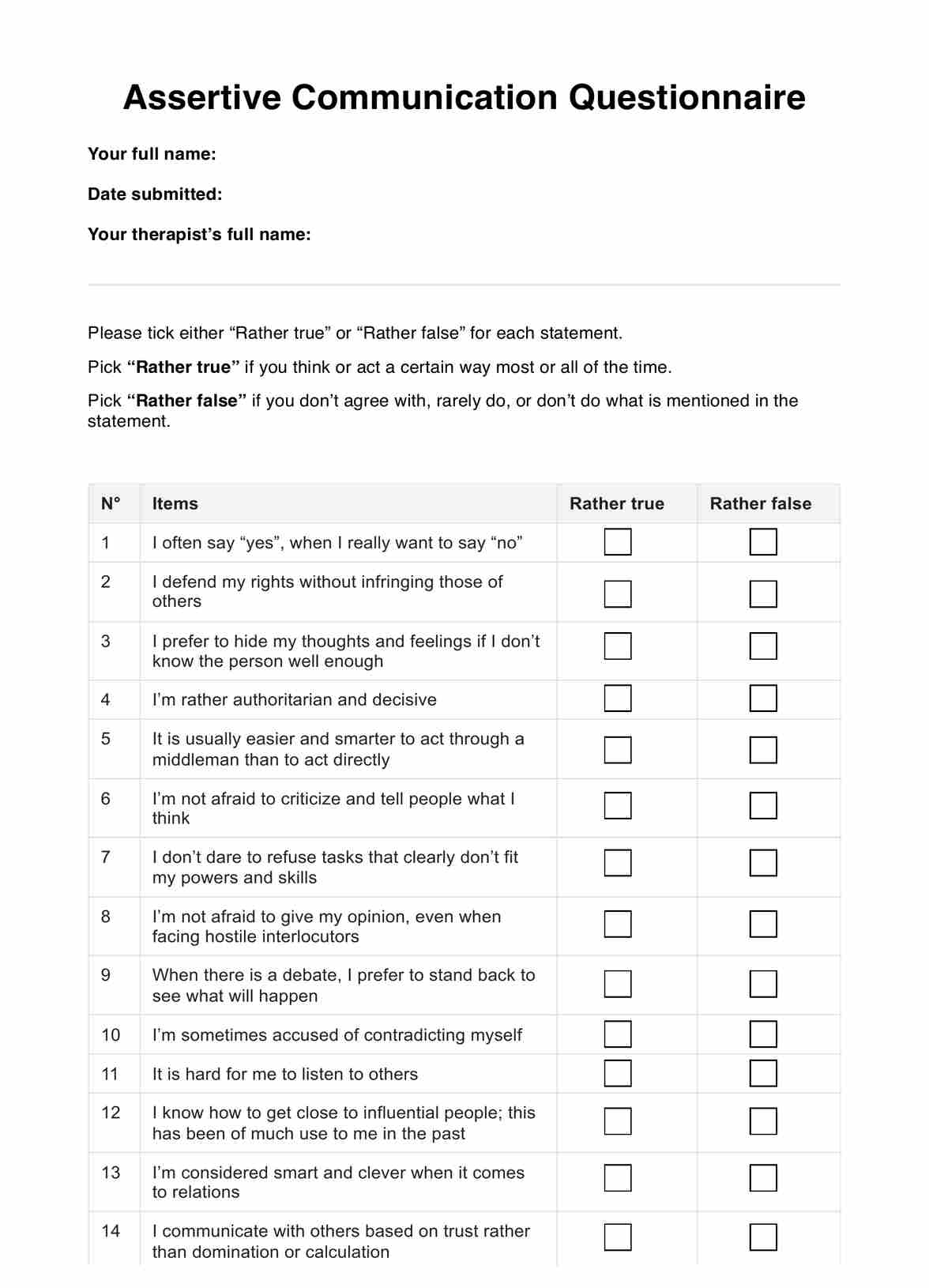It depends on the person answering. The instructions are simple enough that it’s possible to complete within 10 to 15 minutes (including thinking about answers) but don’t be surprised if it takes longer, especially if you conduct it as an interview.

Assertive Communication Questionnaire
Learn how your client communicates by issuing the Assertive Communication Questionnaire to see if they are passive, manipulative, aggressive, or assertive.
Assertive Communication Questionnaire Template
Commonly asked questions
Shape the assertive communication training program of your patient to accommodate their current strengths and weaknesses based on the results. If they are aggressive and/or manipulative, then you must create a program that will help them unlearn those communication styles.
Yes. But please don’t consider this as a substitute for therapy. If you have problems with communication and it is severely impacting your mental health, we recommend seeing a therapist who can teach you assertive communication.
EHR and practice management software
Get started for free
*No credit card required
Free
$0/usd
Unlimited clients
Telehealth
1GB of storage
Client portal text
Automated billing and online payments











